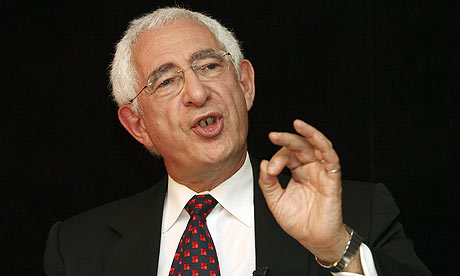Stephen Crouch
Enigmatic lobbyist whose suspected links with the security services were, unusually, forcefully denied by the Foreign Office
In April 1991, with the dust settling on the first Gulf War and a
series of bloody uprisings raging in northern and southern Iraq, Stephen
Crouch was camped out in the Turkish town of CizreThe bleak outpost, perched precariously on the border with both Syria and Iraq, and surrounded on three sides by the River Tigris, was a forward operating base for British and American military observers watching which way the wind would blow for Saddam Hussein. While most of the foreigners who arrived in the Kurdish town that spring had a predefined role in the unfolding drama, no one quite knew why Crouch was there.
He attended press conferences, even asking questions, but he was not a journalist. He wore camouflage, but, with his rolling gait and loud, easy laugh, he was not a military man. Some got the impression that he was a spy, but, while there was much speculation that he was on the payroll of MI6, the CIA or some private military contractor, it was never really clear who he was working for — if anybody.
When later Crouch was named as a mysterious “defence lobbyist” in the fall out surrounding the resignation of the Conservative defence secretary Dr Liam Fox in 2011, the questions arose again, who was he and who was paying him? Seemingly cut from the pages of an Evelyn Waugh novel, his persona was one of the upper crust, slightly out of place, Englishman abroad. A larger than life character, the twinkle in his eye, ready smile, booming voice and studied bumbling manner, won over many of those he met, including his many contacts in Iraq, Libya and Syria, who seemingly forgave his self-taught and rather atrocious Arabic, which was spoken loudly with an English public school accent.
Following his death, one key contact, a former Lebanese intelligence officer, described him as “the top diplomat and negotiator of complex issues . . . he understood the Middle East better than any desk officer and knew what needed to be done by heart.” He added: “There are many novels [by] John le Carré, behind the scenes; he was the real thing.”
Crouch had many friends and even more acquaintances, and could pick up the phone to senior figures in the State Department and Foreign Office, later opening a Middle East consultancy alongside a former MI6 officer and a former British ambassador to Iraq.
The illegitimate son of Pierre Plantard de Saint-Clair, a forger behind the Priory of Sion hoax through which he claimed to be the heir to the French crown, young Crouch and his mother and stepfather emigrated to New Zealand where he spent many of his early years “running wild” on a sheep farm; he was brought home to England at the age of 15 and sent to Malvern School. When the school failed to tame him he was expelled, spending several years wandering around Turkey and developing his love of the Muslim world.
By 1991, he had been in the thick of the fighting in northern Iraq, with photographs showing him carrying a machinegun surrounded by heavily armed Kurdish fighters and blond-haired “special forces” troops. Pictures also show him taking notes from Jalal Talabani, one of the Kurdish independence leaders who became president of Iraq after the fall of Saddam Hussein.
At about this time, the Foreign Office took the unusual step of denying that Crouch had anything to do with them or the Secret Intelligence Service, MI6.
Working as British co-ordinator for the Kurdish Reconstruction Office, badgering the West for help, Crouch was dubbed, with affection by some, as “Lawrence of Kurdistan”. But, having fallen out with the new Kurdish leadership, his friends in Whitehall were quick to abandon him and he was forced to deny he had “passed himself off” as a British official. Back in Britain, Crouch played some unspecified role in Northern Ireland, later hinting that he had some deniable part in the early negotiations with the IRA that led to the Good Friday Agreement in 1998.
Certainly, from time to time, several, slightly unsavoury characters who played a covert role in the Troubles would make an appearance at Crouch’s south London flat. There he would entertain them with copious bottles of red wine, while probing them for information, surrounded by artefacts from his travels, including countless Persian carpets and a silver revolver of dubious origin that took pride of place on the mantelpiece.
At about the same time, he began working with the government of Kuwait, attempting to locate treasures and antiquities looted from the country during the first Gulf War. Dick Ellis, former head of the Scotland Yard art and antiquities squad, said Crouch came to him with information on a Lebanese and Jordanian network involved in marketing looted Kuwaiti cultural objects. As a result, police raided an apartment at the Dorchester Hotel and recovered objects worth more than £1 million, including a royal prayer mat. For Ellis, it was the start of a long and successful association.
Crouch also ran the Iraqi British Interest Group (IBI), a lobbying group that ran foul of the Iraqi National Congress, which was seen as Iraq’s government in exile. Suspicious of his activities, it said: “Crouch is acting as a middleman for businessmen who are trying to rehabilitate Saddam’s regime. Once you start dealing with them and pursuing contracts you are saying they are going to be around to implement those contracts so you are giving legitimacy to the regime.”
Later that year questions were asked in the House of Commons about Crouch’s role after it was disclosed that the Foreign Office’s overseas development office was funding a medical project he was running in northern Iraq.
By 2010, Crouch had branched out into mainstream politics, taking over as chairman of the Carmarthen West and South Pembrokeshire Conservative Association, near his then home in the Welsh constituency. Again he was embroiled in controversy. Simon Hart, a former chief executive of the Countryside Alliance, successfully fought the marginal seat for the Tories. Crouch was active in the campaign, but after the election, having returned to the shadows, he faced questions about political donations that he had secured.
In the years that followed, Crouch returned to the Middle East, continuing his efforts to bring British business and expertise to Iraq, where many of his long-time friends and allies found themselves in key government posts, and established the Iraq Research Group (IRG), alongside two former UK diplomats.
When Fox found himself at the centre of a scandal over his relationship with the lobbyist Adam Werritty, who had been allowed access to the Ministry of Defence, Crouch was caught in the crossfire. After Dr Fox’s resignation, it was disclosed that IRG had reportedly donated £20,000 to Werritty’s lobbying company, and that arrangements had allegedly been made for Werritty and Crouch to meet the minister responsible for the arms trade. Crouch insisted that the meeting was unconnected with his donation.
He was married three times. His first wife was Mireille, with whom he had a daughter, Ingrid; his second wife was Princess Marie, who had Kurdish “royal” ancestry. He is survived by his third wife, Miranda, who is a successful writer, and Ingrid, who manages a shop.
Crouch was killed after he was hit by a car while out walking his dogs near his home in Midhurst, Sussex. To the end, he remained an enigma.
Stephen Crouch, lobbyist, was born on January 25, 1955. He died on February 7, 2015, aged 60






